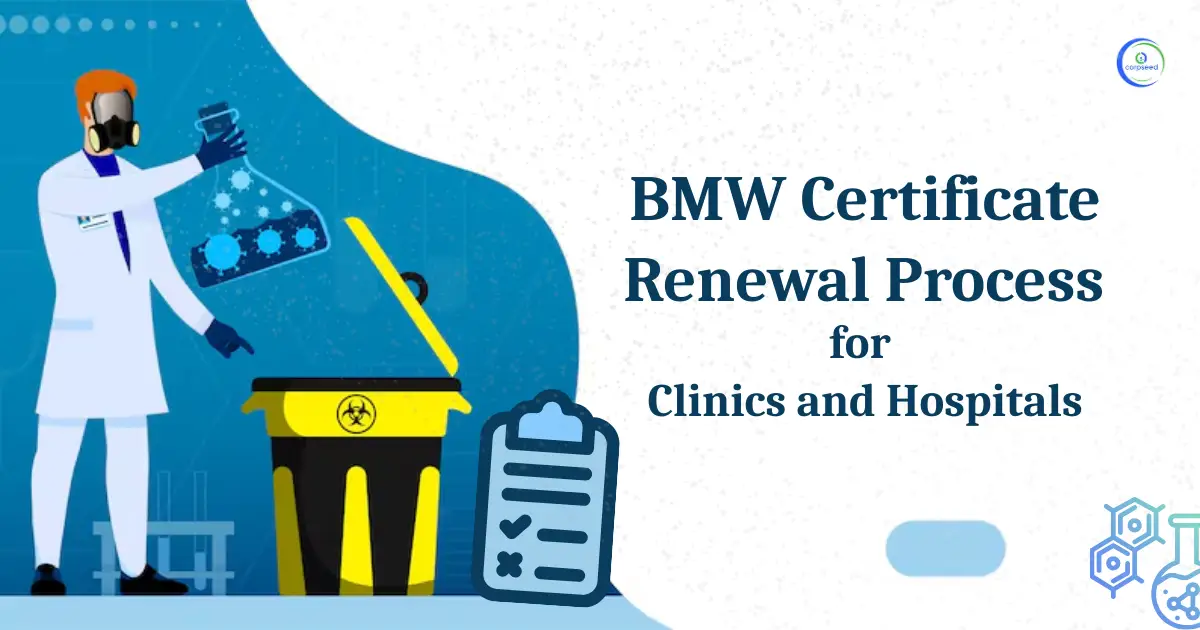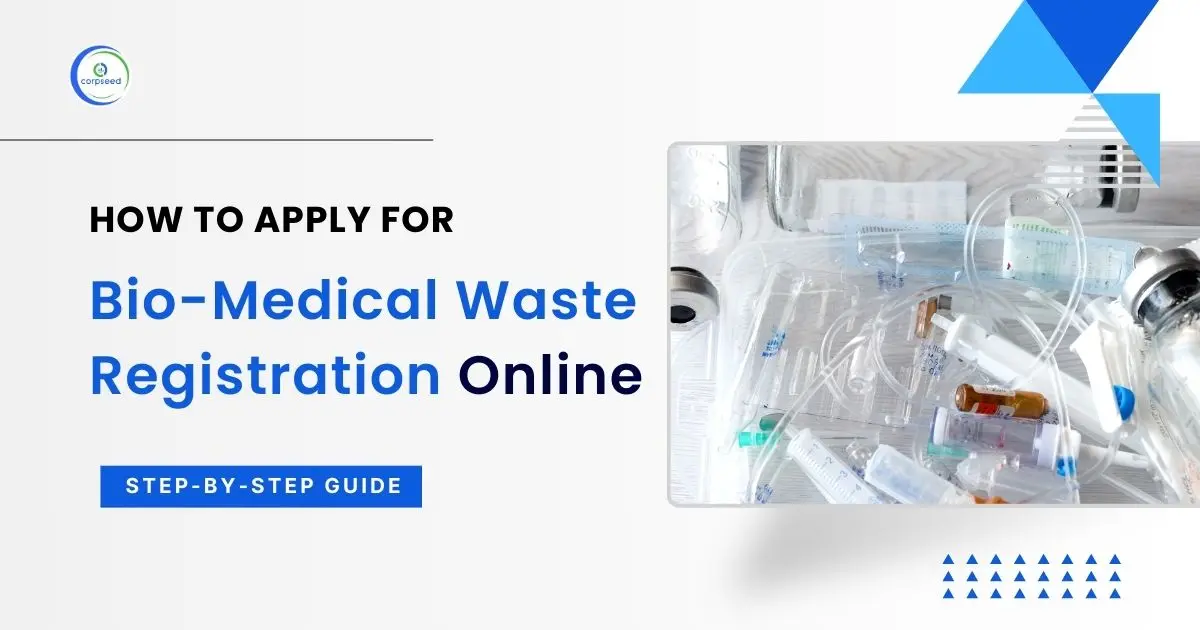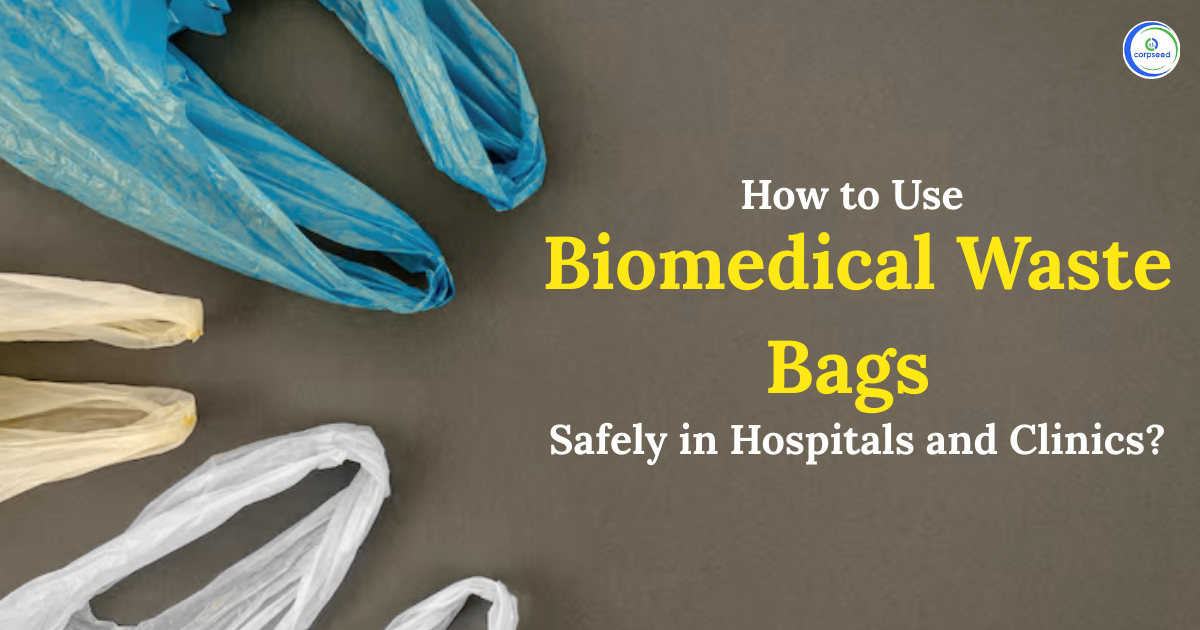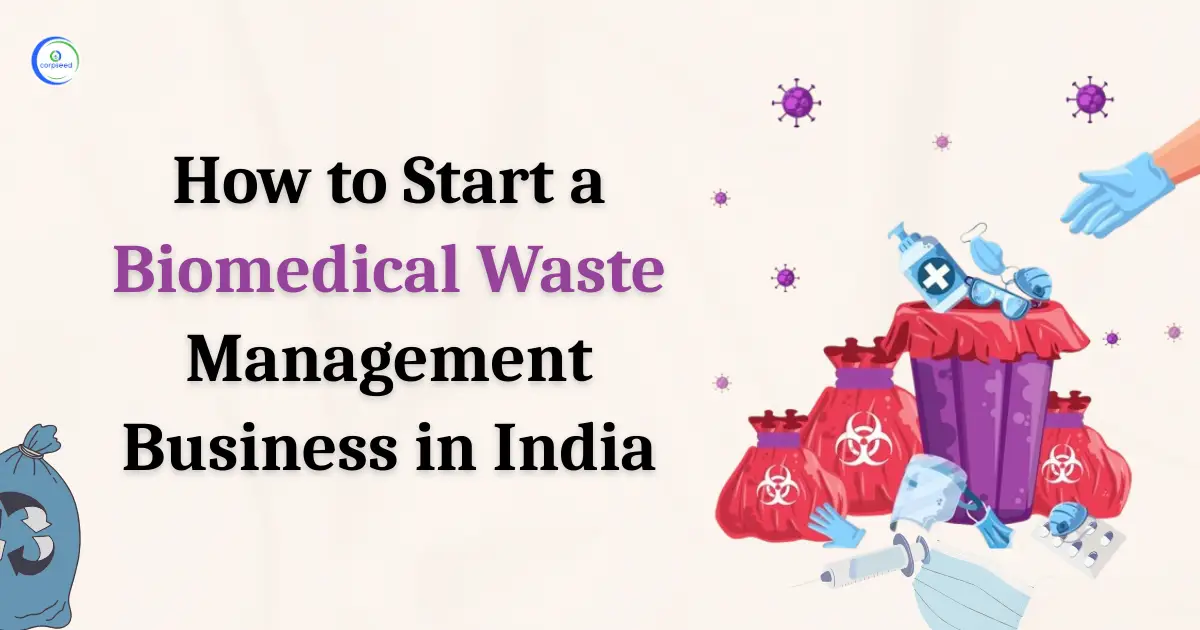Introduction: Biomedical Waste
Any waste containing infectious (or possibly contagious) items is classified as biomedical waste or hospital waste. It may also include waste associated with the generation of biomedical waste that appears to be of medical or laboratory origin (e.g. packaging, unused bandages, infusion kits, etc.) as well as research laboratory waste containing biomolecules or organisms that are primarily restricted from release into the environment. Due to the likelihood of being contaminated with blood and their propensity to cause injury if not adequately confined and disposed of, discarded sharps are considered biological waste whether they are contaminated or not, as stated below. A type of biowaste as biomedical waste.
Table of Contents
--------------Blog Contact Form-------------
Biomedical waste comes in two forms: solid and liquid. Discarded blood, sharps, unwanted microbiological cultures and stocks, identifiable body parts (including amputations), other human or animal tissue, used bandages and dressings, discarded gloves, other medical supplies that may have come into contact with blood and body fluids, and laboratory waste that exhibits the characteristics described above are all examples of infectious waste. Needles, scalpels, lancets, and other instruments capable of penetrating skin are among the possibly contaminated waste sharps.
Biomedical waste is produced by biological and medical sources and activities such as illness diagnosis, prevention, and treatment. Hospitals, health clinics, nursing homes, emergency medical services, medical research laboratories, offices of physicians, dentists, veterinarians, home health care, and morgues or funeral homes are all common generators (or manufacturers) of biological waste. Waste with these qualities may be referred to as medical or clinical waste in healthcare facilities (e.g., hospitals, clinics, doctor's offices, veterinary hospitals, and clinical laboratories).
Biomedical Waste Types
Infectious waste
Infectious waste is thought to contain pathogens (bacteria, viruses, parasites, or fungus) in big enough quantities or concentrations to cause disease in vulnerable hosts. This category includes the following items:
- Infectious agent cultures and stocks from laboratories
- Waste from procedures and autopsy on infectious illness patients (e.g. body tissues, and materials or instruments having come into contact with blood or other body fluids)
- waste generated in isolation wards by diseased patients (e.g. feces and urine, dressings from infected or surgical wounds, clothing that is heavily soiled with blood or other body fluids)
- waste that has been exposed to contaminated hemodialysis patients (e.g. dialysis equipment such as tubing and filters, disposable towels, gloves, aprons, laboratory coats, and gowns)
- animals infected in laboratories
Pathological waste
Dead tissue is infectious materials that could hide particularly harmful and/or contagious infectious organisms. Blood, bodily fluids, tissues, organs, body parts, human fetuses, and animal corpses are examples of such waste. Anatomical waste is a subtype of pathological waste that consists of identifiable human or animal body parts, whether healthy or not.
Sharps
Knives, scalpels, and other blades, infusion sets, needles, hypodermic needles, saws, shattered glass, nails, and other sharps are all examples of sharps. Infections can be transmitted directly into the bloodstream via them. Sharps are usually treated as highly hazardous medical waste, whether or not they are contaminated.
Infusion, transfusion, and perfusion sets; butterfly needles; cannulas; disposable scalpel blades and razors; hemodialysis sets; laboratory slides; broken glass containers (bacteriological and clinical laboratories); ampoules containing solution residues, and other sharp waste must be given special attention.
Sharps are dealt with in two ways to reduce the danger of infection they pose: by reducing their infectiousness or by diminishing their sharpness. The first approach typically requires defining sharps treatment methods that are often as severe as those for pathological waste. The second option involves isolating the sharps (usually in dedicated containers) and mechanically treating or encapsulating them. Sharps containers are subject to stringent restrictions in several states, which include measures to ensure puncture resistance and clear labeling. Sharps must be mechanically blunted or shredded in some states, while others must be rendered unidentifiable.
Radioactive Waste
Nuclear medicine treatments, cancer therapies, and medical equipment that employs radioactive isotopes all produce radioactive waste. Any pathological waste that contains radioactive material is usually classified as radioactive waste. Radiation poses a lot of health dangers, thus it should only be handled by a licensed Maryland medical waste removal business.
Colour Coding and Container type for Biomedical Waste Disposal
The wastes from the above categories must be placed in four distinct colored containers/bags, according to the rules. Deep burial, burning, autoclaving, microwaving, mutilation, shredding, and chemical disinfection are all options for treating waste.
- YELLOW: Human Anatomical Waste, Animal Waste Microbiology & Biotechnology Waste, Wastes from the laboratory cultures, etc and Soiled Wastes e.g. Cotton, Bandages, items contaminated with blood and body fluid.
- RED: Solid Waste-Infected Plastics Wastes generated from disposable items other than the waste sharps such as tubing, catheters, intravenous sets, plastic syringes, etc.
- BLUE: Blue/ White Puncture Proof container waste sharps-needles, scalpels, blades, glass, etc. that may cause puncture and cuts. This includes both used and unused sharps.
- BLACK: Discarded Medicines, Cytotoxic Drugs are to be stored in black dustbins.
Biomedical Waste Disposal Methods
Certain treatment options that reduce the risk of infection from medical waste and prevent scavenging may also pose health and environmental problems. Certain types of medical waste, particularly those containing heavy metals or chlorine, may emit harmful compounds into the atmosphere when incinerated (due to, for example, insufficiently high incineration temperatures or inadequate control of emissions).
When waste is buried in a landfill, it can pollute groundwater (especially if the facility is poorly constructed and/or managed). Because of the aforementioned risks, the relative risks and the method's integration into the overall framework of a comprehensive waste strategy should be carefully evaluated, taking local conditions into account, when a treatment or disposal solution for medical waste is chosen (especially when there is a risk of toxic emissions or other dangerous consequences).
Let's look at the different medical waste disposal facilities first:
- Incineration
- Chemical disinfection
- Wet thermal treatment (steam sterilization)
- Microwave irradiation
- Land disposal
- Inertization
Incineration
Previously, the most common method of disposing of hazardous medical waste was incineration. Alternative approaches are gaining in popularity, despite the fact that it is still widely used solution. Many aspects must be considered when choosing a treatment solution, and many of them are dependent on local conditions, such as health and safety standards, as well as available options for final waste disposal.
The efficiency of incineration is undeniable, yet the process raises severe concerns about air quality. Because the reagent is atmospheric oxygen, a considerable volume of air must travel through the system on a regular basis. If the exhaust air does not pass through a control mechanism, the exhaust stream will contain all volatile compounds at the system's working temperature.
Simple chemical disinfection
Chemical disinfection is widely used in healthcare to kill bacteria on medical equipment, as well as on walls and floors. Chemical disinfection is now utilized to treat medical waste as well. The adding of chemicals to trash eliminates or deactivates the germs in it, albeit disinfection rather than sterilization is more common. This solution is best for the treatment of liquid waste, such as blood, liquid excrement, or hospital sewage. Despite this, solid (and even extremely dangerous) medical waste products like microbiological cultures, sharps, and other sharps can be chemically disinfected. The following are some of the disadvantages of the aforementioned procedure:
• The effectiveness of disinfection is influenced by operational factors.
• Only the surface will be disinfected in the case of intact solid waste.
Human body parts and animal carcasses should not be chemically disinfected unless no other options are available. However, if there is no other option, such materials can be chemically cleaned after shredding. When chemical disinfection is being considered, the ultimate disposal of the processed waste should be carefully considered, as improper disposal could have major environmental effects.
Chemical disinfection is usually done on-site, that is, within the hospital. However, there is an increasing trend toward the creation of commercial, self-contained, and completely automated medical waste treatment systems in industrial zones. The processed waste can be disposed of as non-hazardous medical waste, but the chemical disinfectants employed may have an adverse effect on the environment if they leak or are inappropriately disposed of.
Wet thermal treatment (autoclaving/steam sterilization)
Wet thermal treatment involves shredding the trash before exposing it to high-pressure, high-temperature steam. It works in a similar way as autoclave sterilization. Most microorganisms can be inactivated by moist thermal disinfection if the temperature and contact duration are right (for example, sporulated bacteria require a minimum temperature of 121°C).
Sharps should be crushed or ground in order to improve disinfection efficiency. This solution is ineffective when processing chemical or pharmaceutical waste and is unsuitable for the treatment of anatomical waste and animal remains.
Microwave irradiation
Microwaves kill the majority of microorganisms at a frequency of around 2450 MHz and a wavelength of 12.24 cm. Microwaves rapidly heat the water in the treated waste, destroying pathogenic materials through heat conduction. The garbage is first shredded, then humidified, and transferred to an irradiation chamber with a succession of microwave generators; the irradiation process takes around 20 minutes. The garbage is compacted in a container after irradiation and then released into the municipal waste stream.
In many nations, microwave irradiation is widely utilized, and its popularity is expanding. Despite this, it has relatively expensive expenses, and because there is a danger of operational and maintenance concerns, its usage in developing nations is not yet suggested. Similar methods, which use different wavelengths or electron beams, are in the works.
Land disposal
When there are no other options for processing garbage before disposal, land dumping is considered an acceptable option. When dangerous and untreated medical waste builds up in hospitals, for example, the risk of infection transmission is much higher than when the garbage is appropriately disposed of at a disposal site. Religious or cultural objections to this practice may exist, as well as concerns about diseases escaping into the air, soil, and water, or the dangers posed by scavengers having access to the waste.
• There may be major pollution issues, fires, a higher risk of disease transmission, and infiltration by human and animal scavengers as a result of the unstructured and scattered placement of waste at open dumps. Medical waste should never be disposed of near or on an open dump. The risks of people or animals coming into contact with live pathogens are compounded by the possibility of infection transmission, either directly through wounds, inhalation, or ingestion, or indirectly through a pathogenic host species or the food chain.
• Sanitary landfill sites are preferred over open dumps for at least four reasons: they geologically isolate waste materials from the environment; engineering specifications for waste acceptance are met; operations are directed by on-site personnel; the waste deposit is organized, and the wastes are covered over daily. Some medical trash (infectious waste and pharmaceutical waste in modest volumes) can be disposed of safely. Sanitary landfills reduce soil, surface water, and groundwater contamination, as well as air pollution, aromas, and direct human contact with trash.
Inertization
By combining the waste with cement and other chemicals before disposal, the monetization procedure reduces the chance of harmful compounds seeping into surface water or groundwater. This solution is especially useful for pharmaceuticals and high-metal-content cremation ashes (the treatment is also known as "stabilization" in this situation).
When it comes to pharmaceutical waste, the packaging is removed first, followed by the medications being pulverized. When water, lime, and cement are mixed together, a homogenous material is formed. This bulk is compressed into cubes or pellets, which are subsequently transported from the treatment facility to a storage location. The inert waste combination can alternatively be carried to a disposal site and put into municipal rubbish while still in liquid form.
The key equipment is a grinder or road roller for crushing the drugs, cement, lime, and water to make the mixture and a concrete mixer for combining the waste and the concrete mixture. Inertization is reasonably inexpensive and does not require highly complicated technology.
Bio-Medical Waste
Setup your Biomedical plant as per the CPCB guidelines. Enjoy simple processing, fast updates, and, best of all, no hidden fees.
Hazardous Waste Management
Hazardous Waste Management Rules are notified to ensure safe handling , generation, processing, treatment, package, storage, transportation, use reprocessing, collection, conversion, destruction and disposal of Hazardous Waste. Get authorization from concerened authorities with us.
Bio-Medical Waste Management
Comply with Bio-medical Waste (Management & Handling) Rules notified by the Ministry of Environment. We will draft and file the application for authorization from respective departments.
This portion of the site is for informational purposes only. The content is not legal advice. The statements and opinions are the expression of author, not corpseed, and have not been evaluated by corpseed for accuracy, completeness, or changes in the law.
BOOK A FREE CONSULTATION
Get help from an experienced legal adviser. Schedule your consultation at a time that works for you and it's absolutely FREE.




.webp)




